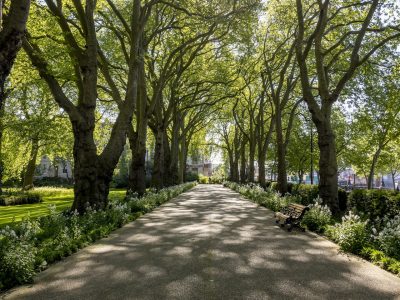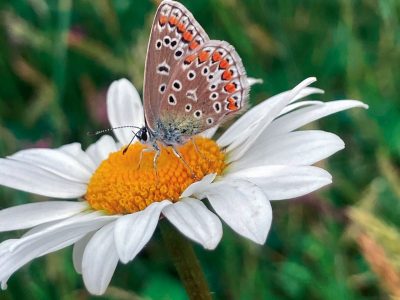
Where the Wild Things Are
It has been over five years since I took over as Head Gardener, and during this time the Garden has evolved considerably. Most of the compliments I now receive are on how the Garden has changed to be more ‘natural’ or ‘wild’. Alongside its soft and sensory beauty, this style of gardening is also part of an increased awareness of the immediate ecological and climate crisis and a desire for gardens to be a part of the solution.
Gardening in tune with nature is not a new notion. William Robinson’s seminal book The Wild Garden was first published in 1870. Within, Robinson rejected the Victorian taste for sterile gardens created using ‘bedding’ plants of exotic annuals. Instead, he advocated a more natural aesthetic using hardy plants selected for their suitability to the conditions. In 1889 Robinson was hired to advise The Inner Temple Garden following disturbance in the Garden from laying a new electricity supply. The advice was not extensive, but it was practical: how to backfill the excavations, his dislike for the unsustainable growing of the chrysanthemums in glasshouses and, more generally, against evergreens in the Garden which could not cope with the pollution.
Robinson remains hugely influential. The need for sustainable gardening is now unquestionable. It is easy to think that all gardening by its very nature achieves this, though many traditional gardening practices – from the reliance on pesticides to peat to plastic – are detrimental to the environment. Thankfully, those at this year’s RHS Chelsea Flower Show would have noticed the seismic shift in the charity’s purpose, promoting gardening for the environment and wellbeing.
Over the past five years we have altered practices to manage the Garden with greater sustainable principles, and this work continues. We are proud to say that we no longer use pesticides or herbicides which are known to have a negative impact on pollinators and soil health, in addition to the consequences on human health not yet being fully known. We are monitoring water usage and have installed a more sustainable irrigation system (programmed to come on at night when watering is more efficient) from an onsite bore hole, removing the need to use mains-treated water on the Garden. We have reduced fertilisers considerably and largely replaced them with organic alternatives.
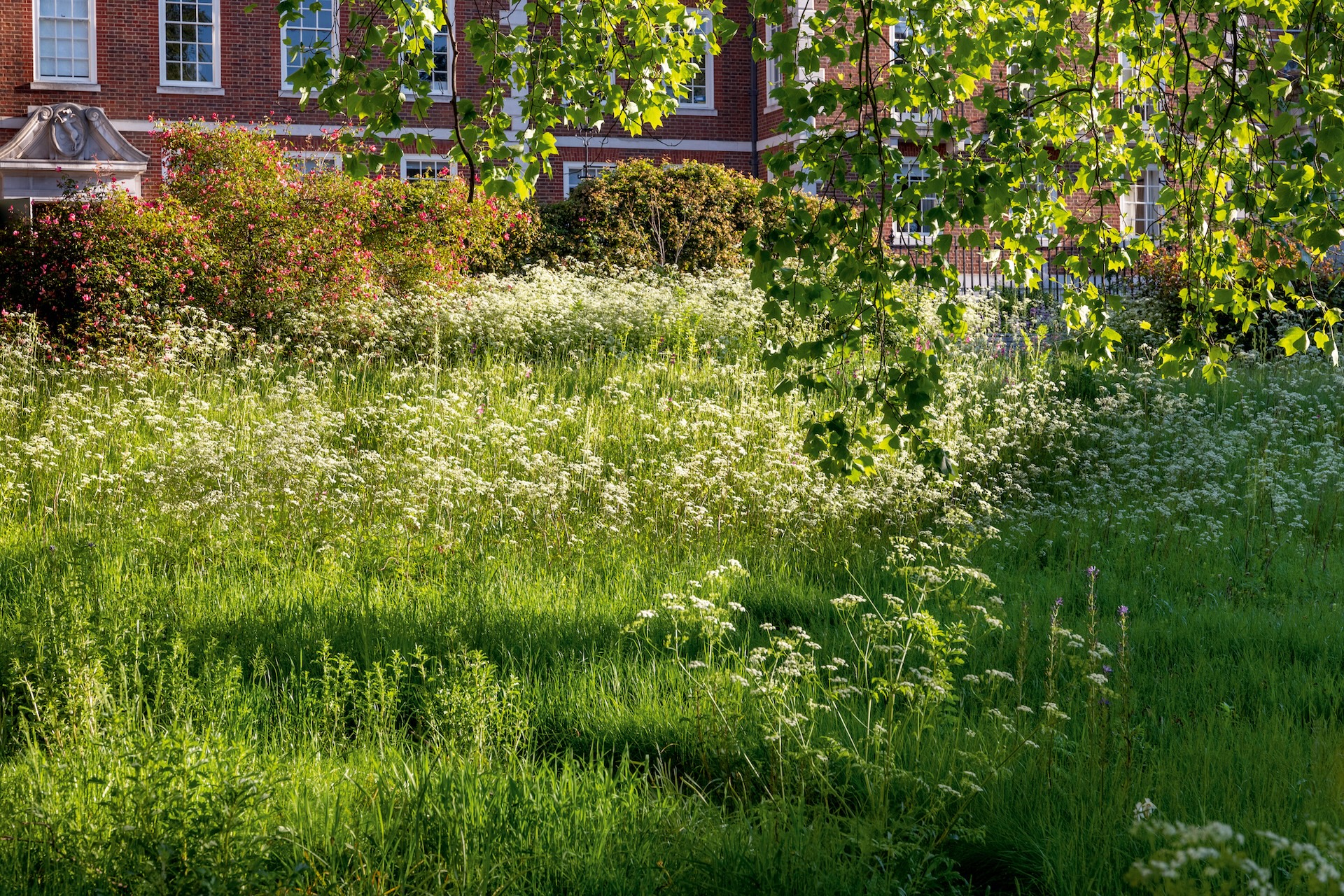
In addition, we have stopped the practice of unsustainable bedding displays, previously used in the Long Border by Paper Buildings, in favour of a mixed herbaceous border. Also, we have converted areas of formal lawn or empty tree circles into beautiful meadows or long grass areas which sustain a host of pollinators and invertebrates. I have been a long-time supporter of the ecological wildflower projects of Richard Scott, the Director of the National Wildflower Centre at Eden Project. It was lovely having him call into the Garden in June to see the work we have been doing and discuss ways in which we may be able to work together in future.
Since 2022, we have been working with Pollinating London Together (PLT) who have been using the Garden as a site for its research to gather data on the diversity of pollinators in the City of London. PLT also educates on how to increase the range and diversity of pollinators with recommendations for plants and habitat. From PLT, the team has learnt that the well-intentioned introduction of beehives on a large scale in London has put a strain on the population of wild bees and other pollinators, as the honeybee hives compete for floral resources. I was astounded to learn there are over 270 bee species in the UK, honeybees accounting for just one. Therefore, the work we are doing with PLT is to preserve and create food sources and habitats in the Garden to support the other pollinator species.
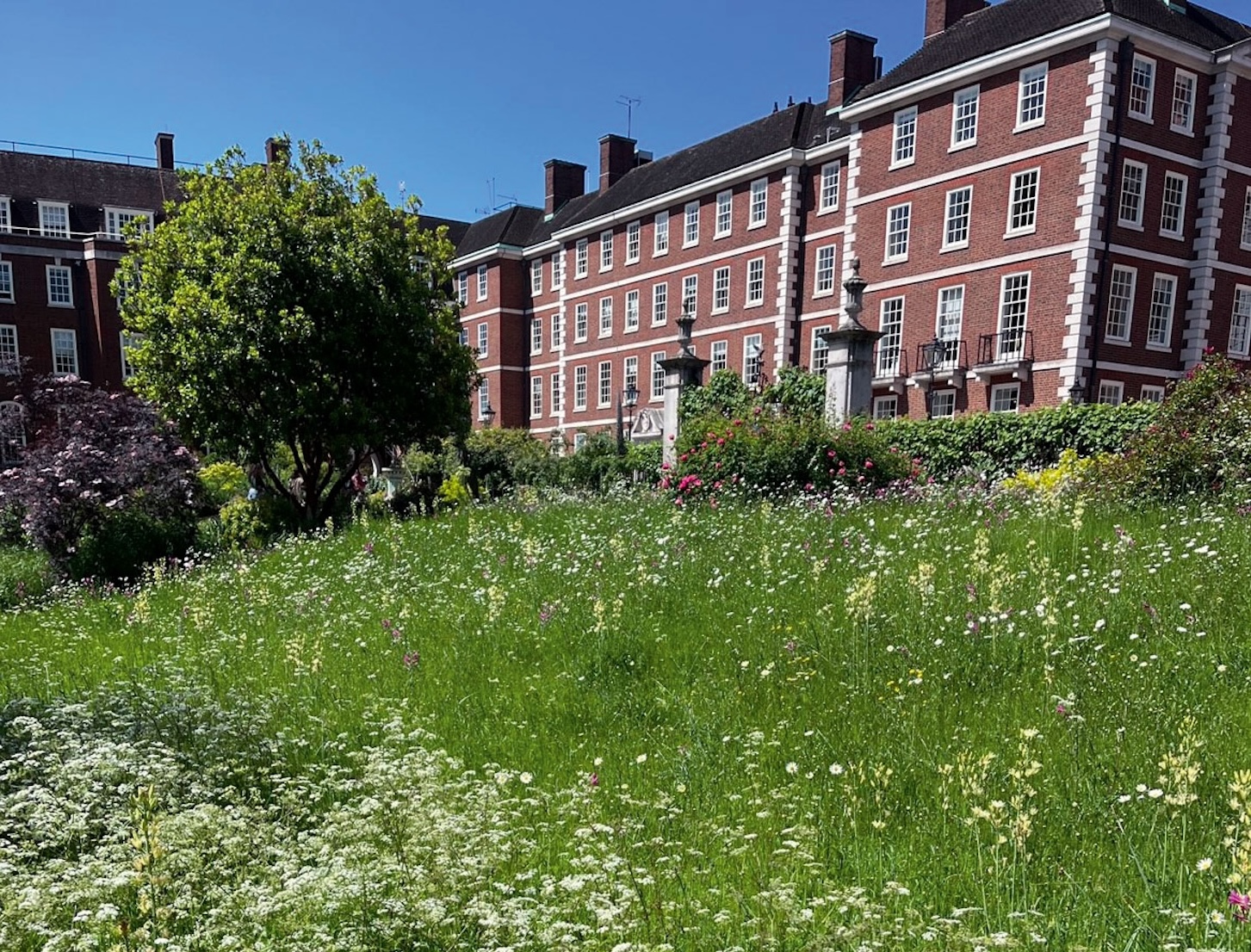
Hopefully many of you have already read gardener Christine’s Nature Journal article in the Trinity edition of Innerview. If not, it is still available on the website and well worth a read. Christine has been keeping a nature journal, logging which different bees, butterflies, moths, flies, and birds are in the Garden and uploading this data onto apps for scientists to use. As part of this, she has been putting out moth boxes at night to monitor what species we have in the Garden. In her article, Christine draws attention to a recent study by the University of Sussex that found moths – of which there are 2,500 species compared to 57 species of butterfly in the UK – are more efficient pollinators at night than day-flying pollinators, namely bees.
Christine has been transformative in sharing her passion and knowledge for biodiversity with the team. Sadly, with a tear in our eye, we said bon voyage to Christine in August as she and her family moved back to France. Christine leaves a valuable legacy in the Garden team; we now see the importance and beauty of moths and flies as pollinators or an ant hill in the meadow as a food source for the many birds we have in the Garden. We will continue the work Christine has so passionately encouraged, continuing to log the different species and work to create habitat in the Garden to support as many species as possible. Our objective is to marry excellent horticultural standards in a grade II listed garden with progressive ecological principles.
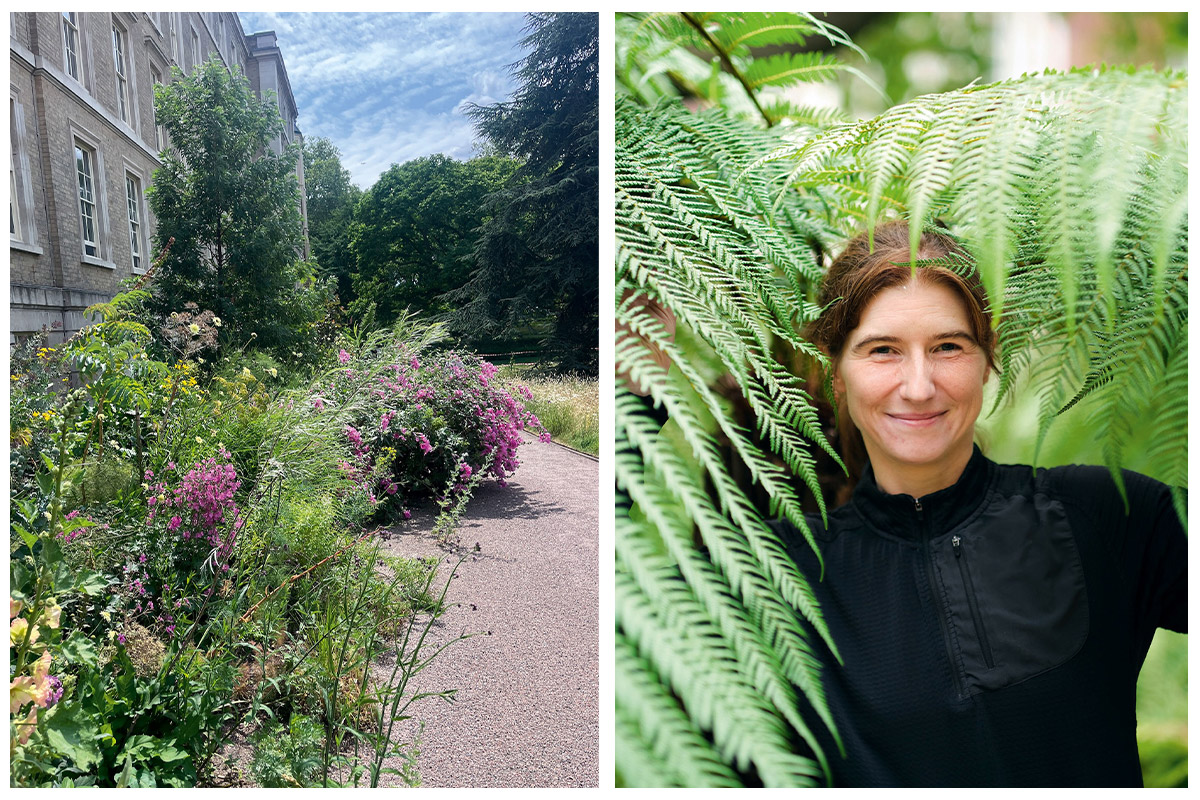
There is no doubt that the climate and ecological crisis is upon us and accelerating faster than predicted, with extremes of temperature and flooding both in the UK and globally. In terms of biodiversity in the UK, Kew has reported that since the 1930s we have lost 97 per cent of our wildflower meadows and the British Trust for Ornithology (BTO) reports that since the 1970s we have lost close to 30 million house sparrows. A large proportion of this biodiversity crisis can be attributed to changes in farming practices, but gardens have an important role, especially in the City.
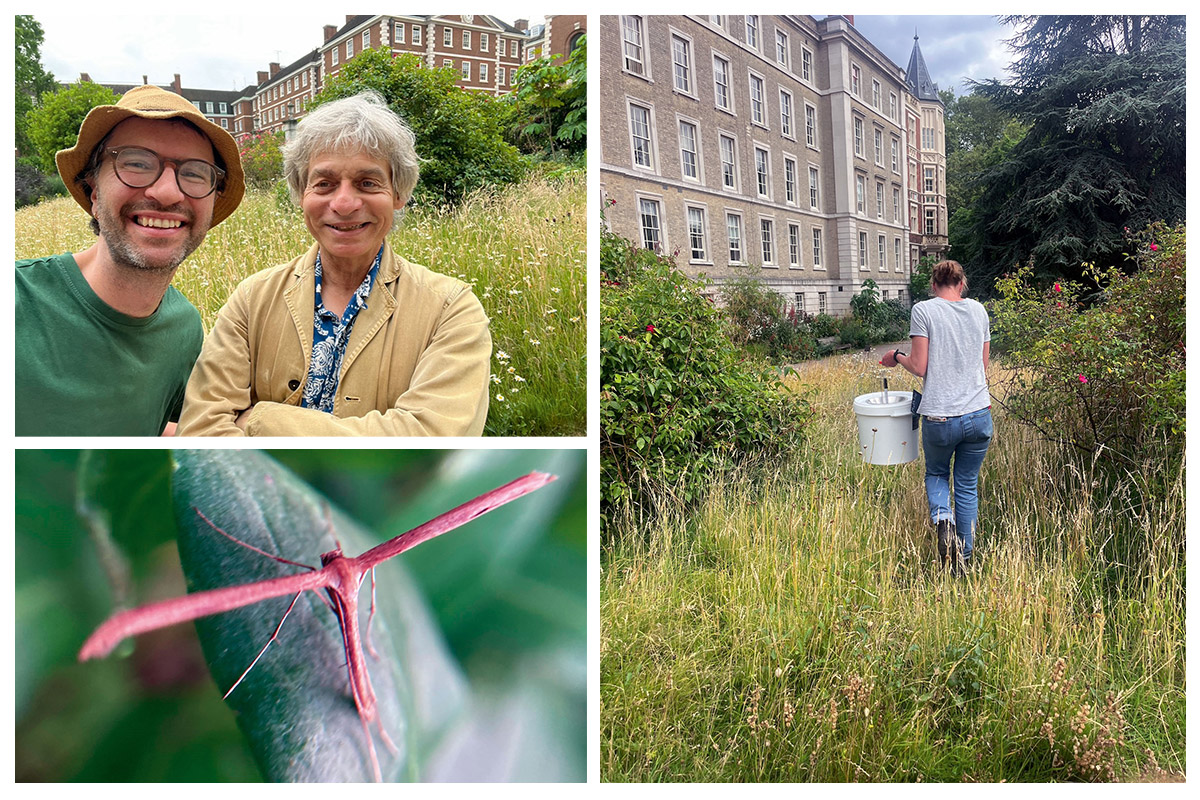
While monitoring is an important part of countering what is happening, so is action. Initiatives such as ‘No Mow May’ are starting to change public perceptions, though I can have some issues with such campaigns. Ideally, we should be encouraging people, and importantly councils, to leave areas of long grass or meadow longer than just May. This said, I understand ‘No Mow Summer’ doesn’t have quite the same ring and any step in the right direction is welcome.
A large proportion of this biodiversity crisis can be attributed to changes in farming practices, but gardens have an important role, especially in the City.
It is hoped the developments we are carrying out in the Garden with our meadows and other biodiversity initiatives act as inspiration to others, demonstrating it is possible to garden along ecological principles in a historic and beautiful garden. There is still much to learn, understand and implement to ensure the Garden truly delivers all it can in terms of climate and biodiversity. Though the speed of the crisis is alarming, it is empowering to feel that the Garden can be part of the solution, creating a sanctuary for biodiversity and people in the heart of the City of London.
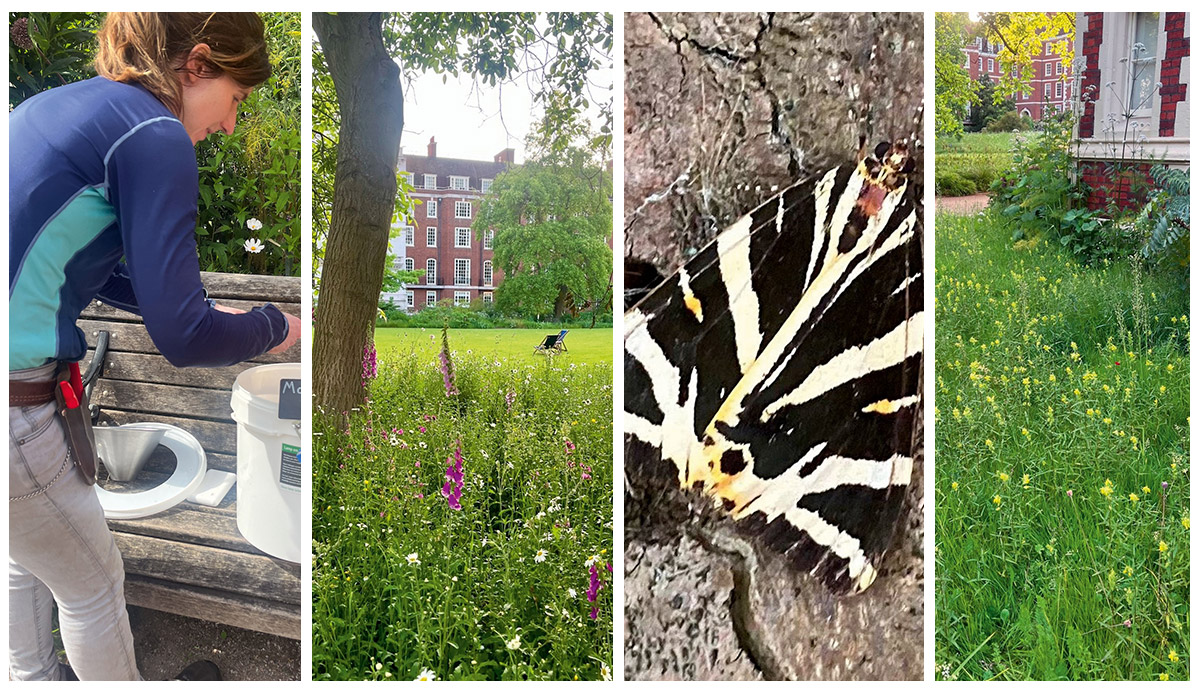
Sean Harkin
Head Gardener
